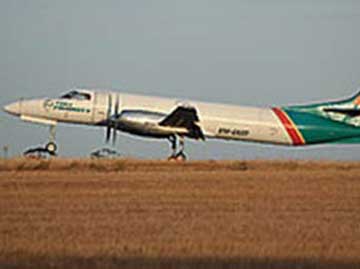
On 28 August 2013, at 1:30 in the morning, the pilot of a Fairchild SA227 took off from Brisbane for Bankstown, only to find the right wing of the aircraft dropping markedly.
There had been issues with the aircraft’s fuel balance earlier in the day, and the left fuel quantity gauge had been identified as unserviceable, but the pilot had believed that the imbalance issue had been addressed. Clearly, that was not the case.
Thankfully, the weather was fine and the night was bright, and the pilot was able to establish a visual reference and maintain control of the aircraft. He raised the right wing, and opened the fuel cross-flow valve to rebalance the aircraft. After about two minutes, the aircraft was rebalanced, and he closed the cross-flow valve. The aircraft continued to handle normally during the flight until the descent when, at about 400 ft above ground level, the right wing suddenly dropped again. The pilot raised the right wing and elected to continue the approach, landing without further incident.
This incident has demonstrated the importance of thorough pre-flight preparation in particular with regard to fuel planning and loading.
The events that led up to this dangerous situation were characterised by a series of miscommunications and assumptions. Earlier that day, the aircraft had been flown from Cairns to Brisbane. The pilot of that flight (who would not be flying the aircraft on its next leg) had advised the engineering staff that the fuel tanks were out of balance and the left fuel quantity gauge was unserviceable. The pilot and engineers rebalanced the fuel tanks in accordance with the company procedures.
The pilot of the next flight then requested that additional fuel be uploaded due to the forecast weather at Bankstown. A staff member, noting the recorded imbalance and unaware that the previous pilot and engineers had corrected the problem, placed more fuel in the right tank, once more bringing the aircraft out of balance.
When it came time for the pilot to establish the fuel quantities, he could not use the fuel gauge, and so he made the calculation using information from the fuel log and the remaining fuel gauge. The additional fuel and the company’s procedures for estimating fuel, however, resulted in the pilot unknowingly taking off with a fuel imbalance of 100 L between the tanks.
This incident has demonstrated the importance of thorough pre-flight preparation in particular with regard to fuel planning and loading. As a result of the occurrence, the aircraft operator is instituting several safety actions to ensure that there will be no repetition of the circumstances which could have so easily turned disastrous.
Read the ATSB investigation report, AO-2013-196 for information and strategies on ensuring fuel safety.


